Science experiments always add a special fun-factor to homeschooling. They’re a fantastic way to make learning hands-on, engaging, and, most importantly, a blast! Today, I’m excited to share 47 science experiments that your kids will absolutely love. These experiments cover a wide range of scientific concepts and are suitable for all ages. Plus, they require minimal materials that you likely already have at home.
They’re not just loads of fun on their own; they also go hand-in-hand with many science curricula. Whether you’re doing the classic approach, using an online science program, or something else entirely, these experiments fit right in.
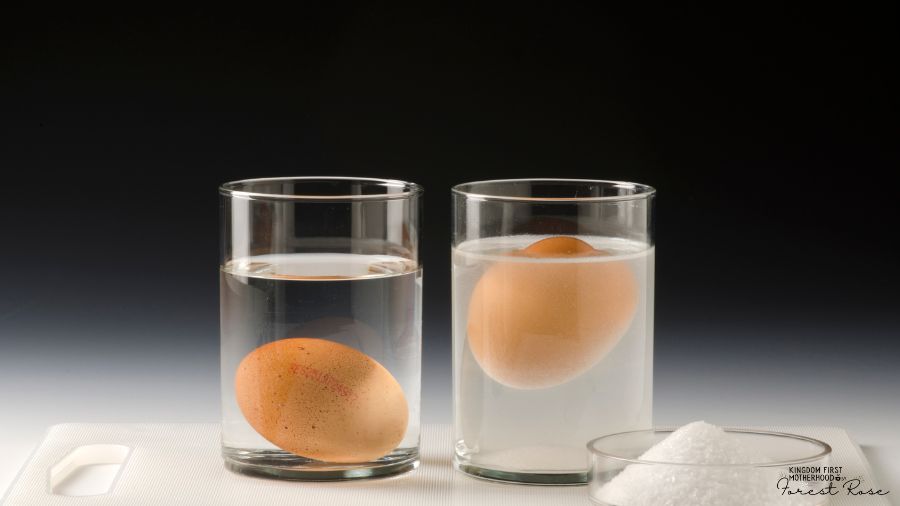
Contents
- 1 Top 8 Science Curriculum Choices
- 2 47 Homeschool Science Experiments
- 2.1 1. Dancing Raisins
- 2.2 2. Egg in a Bottle
- 2.3 3. Homemade Volcano
- 2.4 4. Rainbow in a Jar
- 2.5 5. Invisible Ink
- 2.6 6. Milk and Soap Experiment
- 2.7 7. Potato Battery
- 2.8 8. Balloon Rocket
- 2.9 9. Tornado in a Jar
- 2.10 10. Salt Crystal Garden
- 2.11 11. Elephant Toothpaste
- 2.12 12. Static Electricity with a Balloon
- 2.13 13. Baking Soda and Vinegar Reaction
- 2.14 14. Rainbow Reflection
- 2.15 15. Magic Pepper Experiment
- 2.16 16. Eggshell Geode
- 2.17 17. Rainbow Slime
- 2.18 18. Fizzy Lemonade
- 2.19 19. Oobleck (Non-Newtonian Fluid)
- 2.20 20. Exploring Capillary Action
- 2.21 21. Density Rainbow
- 2.22 22. Exploding Baggies
- 2.23 23. Cloud in a Bottle
- 2.24 24. Egg Drop Challenge
- 2.25 25. Water Cycle in a Bag
- 2.26 26. Dissolving Candy Science Experiment
- 2.27 27. Lemon Volcano
- 2.28 28. Lemon Battery
- 2.29 29. Homemade Lava Lamp
- 2.30 30. Solar Oven S’mores
- 2.31 31. Seed Germination
- 2.32 32. Exploring Sound Vibrations
- 2.33 33. Paper Airplane Challenge
- 2.34 34. Magic Milk Experiment
- 2.35 35. Water Xylophone
- 2.36 36. Walking Water Experiment
- 2.37 37. Vinegar and Baking Soda Rockets
- 2.38 38. Homemade Ice Cream in a Bag
- 2.39 39. Refraction Rainbow
- 2.40 40. Water Filtration Experiment
- 2.41 41. Make Your Own Crystal Snowflakes
- 2.42 42. Rainbow Fireworks in a Jar
- 2.43 43. Solar-Powered S’mores Oven
- 2.44 44. Magic Jumping Beans
- 2.45 45. Fizzing Science Lab
- 2.46 46. Static Electricity Butterfly
- 2.47 47. Skittles Experiment
Top 8 Science Curriculum Choices
- Apologia: Apologia is a well-loved choice among homeschoolers. Their science curriculum is known for its Christian worldview and thorough exploration of scientific concepts. The engaging textbooks, hands-on experiments, and focus on critical thinking make it a hit with both students and parents.
- Masterbooks: Masterbooks offers a range of Christian-based science curricula. They emphasize a biblical perspective and offer comprehensive resources for science education. The books are visually appealing and include practical activities that make learning science a lot of fun.
- Science Unlocked: Science Unlocked takes a unique approach by offering science programs that are both engaging and adaptable for various learning styles. With a focus on interactive, online lessons, it’s a great fit for tech-savvy families looking for an innovative way to explore science.
- Berean Builders: Berean Builders specializes in science programs rooted in a biblical worldview. Their materials are known for being thorough and easy to understand. The curriculum is packed with hands-on activities, making science come alive for your little scientists.
- Elemental Science: Elemental Science offers a variety of science curricula that follow a classical approach. Their programs are designed to instill a love for science and are adaptable for multiple ages. They’ve got a knack for making complex scientific ideas easy to grasp.
- Answers in Genesis: Answers in Genesis provides science curricula from a biblical perspective. Their programs aim to align science with a biblical worldview and help students explore and understand the wonders of the natural world in light of their faith.
- A Beka: A Beka offers comprehensive science curricula with a Christian worldview. Their materials are thorough and cover various science topics, making them a popular choice among homeschooling families.
- Christian Kids Explore: Christian Kids Explore creates science curricula that are family-friendly and great for interactive learning. Their materials are easy to use and typically include activities that bring science to life in your home.
- Noeo Science: Noeo Science offers a secular approach to science education with a focus on classical and living books. Their curriculum is designed to be open and go, making it a convenient choice for busy homeschooling parents.
These are just a few of the fantastic science curricula available for homeschoolers, and the right choice for your family will depend on your educational goals, teaching style, and your child’s interests. Alternatively, you can get full science kits.
What’s cool about these science experiments is they take what your kids learn in their science lessons and put it into action, making science concepts stick in their heads. So, whatever science curriculum you’re going with, these hands-on experiments are going to make homeschooling a real adventure and get your young scientists all fired up about learning!

47 Homeschool Science Experiments
1. Dancing Raisins
Materials:
- Clear glass
- Carbonated water (e.g., club soda)
- Raisins
Instructions:
- Fill the glass with carbonated water.
- Drop a few raisins into the water.
- Observe as the raisins dance up and down due to the carbonation bubbles.
2. Egg in a Bottle
Materials:
- Hard-boiled egg
- Glass bottle with a narrow neck
- Piece of burning paper
Instructions:
- Peel the hard-boiled egg.
- Light a small piece of paper on fire and drop it into the bottle.
- Quickly place the egg on the bottle’s opening.
- Watch as the egg gets sucked into the bottle due to the change in air pressure.
3. Homemade Volcano
Materials:
- Empty plastic bottle
- Baking soda
- Vinegar
- Dishwashing soap
- Red food coloring
- Cardboard and clay for creating the volcano structure
Instructions:
- Create a volcano structure using the cardboard and clay.
- Place the plastic bottle inside the volcano structure.
- Add 2 tablespoons of baking soda into the bottle.
- Pour in some vinegar, a few drops of dishwashing soap, and red food coloring.
- Watch the eruption!
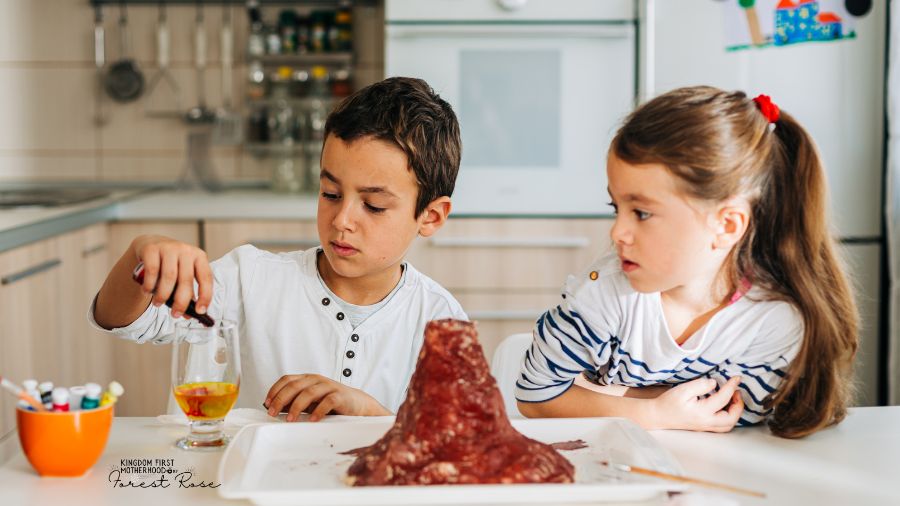
4. Rainbow in a Jar
Materials:
- Different liquids with varying densities (e.g., honey, syrup, dish soap, water, vegetable oil)
- Food coloring
- Tall clear glass
Instructions:
- Fill the glass with each liquid, layer by layer, starting with the heaviest (honey) at the bottom.
- Add a few drops of food coloring to each layer.
- Watch as the colors settle in their respective layers, creating a rainbow effect.
5. Invisible Ink
Materials:
- Lemon
- Cotton swab
- Paper
Instructions:
- Squeeze lemon juice into a small bowl.
- Dip the cotton swab into the lemon juice.
- Write a message on a piece of paper using the lemon juice.
- Allow it to dry.
- To reveal the message, heat the paper with a warm iron.
6. Milk and Soap Experiment
Materials:
- Plate
- Whole milk
- Food coloring
- Dish soap
- Cotton Swab
Instructions:
- Pour a thin layer of milk onto the plate.
- Add drops of different food coloring to the milk.
- Dip a cotton swab in dish soap and touch it to the milk’s surface.
- Observe as the colors swirl and mix due to the soap’s reaction with the fat in the milk.
7. Potato Battery
Materials:
- Potato
- Copper and zinc electrodes (e.g., copper wire and galvanized nails)
- LED light bulb
- Alligator clips
Instructions:
- Insert the copper and zinc electrodes into the potato.
- Connect the alligator clips to the electrodes.
- Watch as the LED bulb lights up, powered by the chemical reaction in the potato.
8. Balloon Rocket
- Drinking straw
- String
- Balloon
- Tape
Instructions:
- Thread a string through the drinking straw.
- Secure the string between two fixed points.
- Inflate the balloon and tape it to the straw.
- Release the balloon and watch it zoom along the string like a rocket.
9. Tornado in a Jar
Materials:
- Clear jar with a lid
- Water
- Dishwashing soap
- Glitter
Instructions:
- Fill the jar with water.
- Add a few drops of dishwashing soap and a pinch of glitter.
- Close the lid tightly.
- Swirl the jar in a circular motion to create a tornado inside.
10. Salt Crystal Garden
Materials:
- Clear glass
- Water
- Salt
- String
- Pencil
Instructions:
- Fill the glass with water.
- Stir in salt until it no longer dissolves.
- Suspend a string in the glass using a pencil.
- Allow the water to evaporate, leaving behind salt crystals on the string.
11. Elephant Toothpaste
Materials:
- 30% hydrogen peroxide solution (adult supervision required)
- Dry yeast or potassium iodide
- Dish soap
- Warm water
- Empty plastic bottle
- Safety goggles and gloves
- A tray or container (to contain the foam)
Instructions:
- Put on safety goggles and gloves to protect your eyes and hands. Also, ensure you’re in a well-ventilated area or perform this experiment outdoors.
- Place the empty plastic bottle on the tray or container.
- Pour about 1/2 cup of 30% hydrogen peroxide solution into the bottle. Be very careful when handling hydrogen peroxide as it can irritate the skin and eyes.
- Add a few drops of dish soap into the bottle and swirl it around to mix.
- In a separate container, mix 2-3 tablespoons of dry yeast with a small amount of warm water (or use a similar amount of potassium iodide) to create a catalyst.
- Quickly pour the yeast mixture (or potassium iodide) into the bottle with hydrogen peroxide and step back.
- As the catalyst reacts with the hydrogen peroxide, it releases a large amount of oxygen gas. The soap in the mixture traps the oxygen, creating a massive foamy eruption that can resemble a growing worm or a toothpaste tube squeezing out foam.
- This experiment is not only visually impressive but also illustrates the concept of chemical reactions and the production of gases. Discuss with young scientists the science behind the reaction and the safety precautions taken.
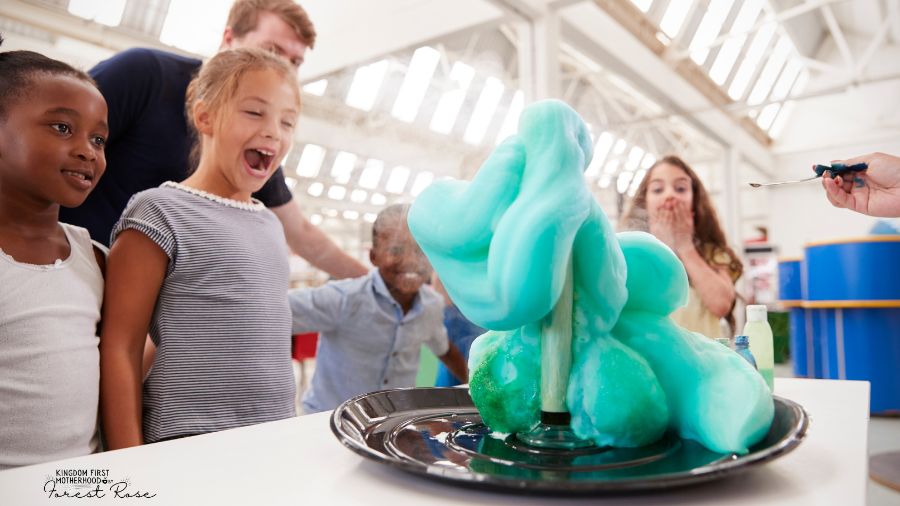
12. Static Electricity with a Balloon
Materials:
- Balloon
- Small piece of fabric (like a wool cloth)
- Hair
Instructions:
- Blow up the balloon and tie it.
- Rub the balloon against the fabric to create static electricity.
- Hold the balloon near your hair, and watch your hair stand on end.
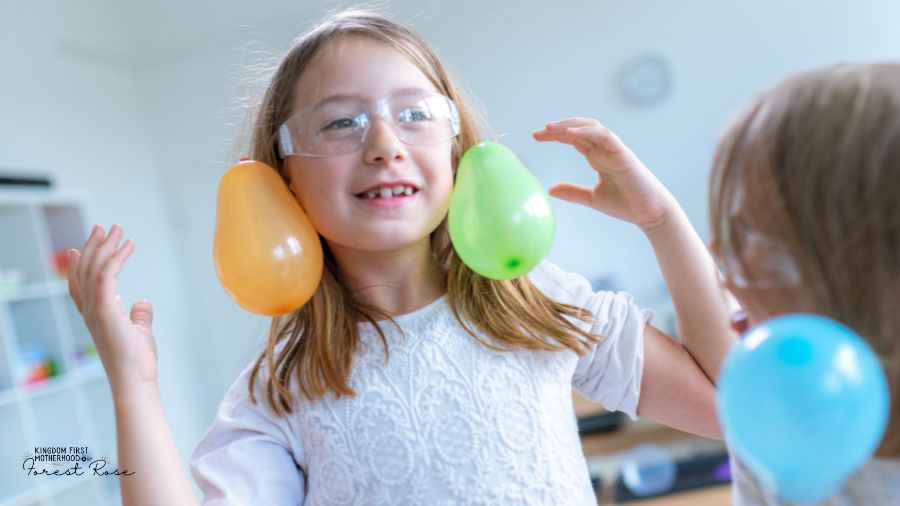
13. Baking Soda and Vinegar Reaction
Materials:
- Baking soda
- Vinegar
- Empty plastic bottle
Instructions:
- Place the empty bottle on a tray (to catch any spills).
- Add a few tablespoons of baking soda into the bottle.
- Carefully pour vinegar into the bottle.
- Watch the chemical reaction as the mixture fizzes and expands.
14. Rainbow Reflection
Materials:
- Glass of water
- White paper
- Flashlight
Instructions:
- Fill the glass with water.
- Shine a flashlight through the water onto a white piece of paper.
- Observe the rainbow of colors on the paper due to refraction.
15. Magic Pepper Experiment
Materials:
- Plate
- Water
- Black pepper
- Dishwashing soap
Instructions:
- Pour water onto the plate.
- Sprinkle black pepper on the water’s surface.
- Dip your finger into dishwashing soap, then gently touch the surface of the water.
- Watch as the pepper “scatters” to the plate’s edges due to the soap’s surface tension-breaking properties.
16. Eggshell Geode
Materials:
Eggshell
Epsom salt
Hot water
A cup
Instructions:
- Carefully crack an egg, keeping the shell halves.
- Dissolve Epsom salt in hot water, creating a saturated solution.
- Fill the eggshell halves with the Epsom salt solution.
- Let it sit for several days as the Epsom salt crystals grow inside the eggshells.
17. Rainbow Slime
Materials:
- Clear school glue
- Liquid laundry detergent
- Food coloring
Instructions:
- Pour clear glue into a bowl.
- Add a few drops of food coloring and mix.
- Gradually add laundry detergent and stir until the mixture reaches a slime consistency.
- Have fun stretching and playing with your rainbow slime.

18. Fizzy Lemonade
Materials:
- Lemon
- Baking soda
- Water
Instructions:
- Squeeze the juice from a lemon into a glass.
- Add a teaspoon of baking soda.
- Watch as the mixture fizzes, just like a fizzy lemonade.
19. Oobleck (Non-Newtonian Fluid)
Materials:
- Cornstarch
- Water
- Bowl
Instructions:
- Mix cornstarch and water in a bowl until it reaches a gooey, non-Newtonian fluid consistency.
- Experiment with its unique properties by trying to pick it up and observing how it behaves like both a liquid and a solid.
20. Exploring Capillary Action
Materials:
- White flowers (like carnations)
- Food coloring
- Glass with water
Instructions:
- Fill the glass with water.
- Add a few drops of food coloring.
- Place the white flower in the glass and observe how the color travels up the flower’s stem through capillary action.
21. Density Rainbow
Materials:
- Four clear cups or glasses
- Honey
- Corn syrup
- Dish soap
- Water
- Food coloring (red, blue, and green)
Instructions:
- Fill each cup with a different liquid (from bottom to top: honey, corn syrup, dish soap, and water).
- Add a few drops of different food coloring to each layer.
- Observe the distinct layers forming due to differences in liquid density.
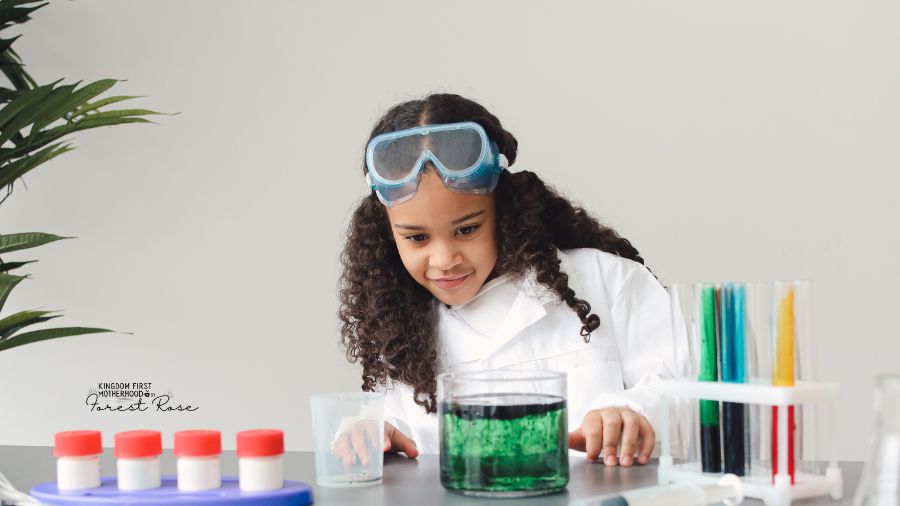
22. Exploding Baggies
Materials:
- Baking soda
- Vinegar
- Ziplock bags
Instructions:
- Put a few tablespoons of baking soda into a Ziplock bag.
- Pour vinegar into the bag.
- Seal the bag, and watch as it inflates and “explodes” due to the chemical reaction.
23. Cloud in a Bottle
Materials:
- Clear plastic bottle with a cap
- Matches or a lighter
- Warm water
Instructions:
- Fill the bottle about one-third full with warm water.
- Screw the cap on tightly.
- Squeeze and release the bottle quickly to create a low-pressure area inside.
- Carefully unscrew the cap while squeezing to release the pressure.
- Observe the “cloud” that forms inside the bottle as the warm air cools and condenses.
24. Egg Drop Challenge
Materials:
- Raw egg
- Various materials for cushioning (e.g., cardboard, cotton balls, rubber bands)
- Tape
Instructions:
- Challenge your kids to design a protective container for an egg to prevent it from breaking when dropped from a height.
- Provide a variety of materials and tools for them to construct their designs.
- Test the egg containers by dropping them from a chosen height.
25. Water Cycle in a Bag
Materials:
- Sealable plastic bag
- Permanent markers
- Water
Instructions:
- Draw the sun on the bag with a marker.
- Add a little water to the bag.
- Seal the bag and tape it to a sunny window.
- Observe the water cycle as the sun causes water to evaporate, condense, and precipitate.
26. Dissolving Candy Science Experiment
Materials:
- Clear jars or cups
- Various types of candy (e.g., Skittles, M&Ms)
- Water
Instructions:
- Place a different type of candy in each jar.
- Pour water over the candies.
- Observe and compare how each candy dissolves differently in the water.
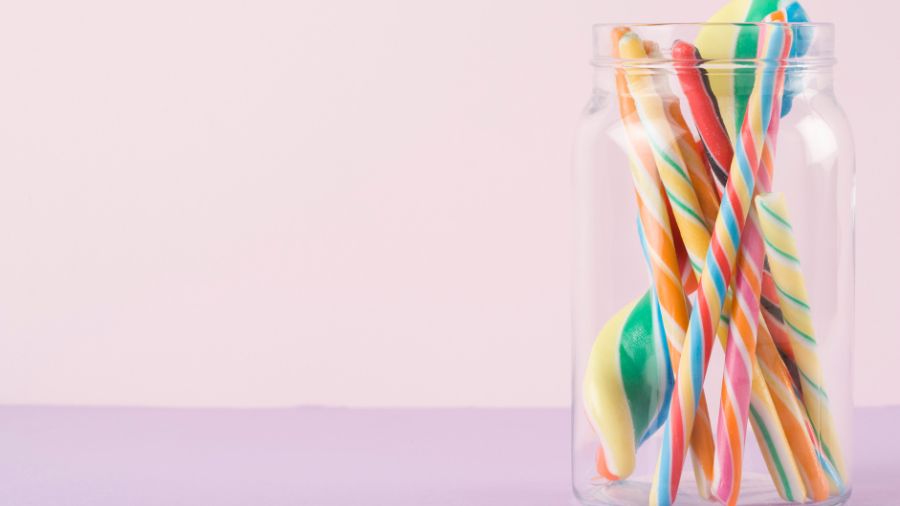
27. Lemon Volcano
Materials:
- Lemon
- Baking soda
- Dishwashing soap
Instructions:
- Cut the top off the lemon and scoop out the fruit.
- Pour baking soda into the hollowed-out lemon.
- Add a few drops of dishwashing soap.
- Watch the lemon “volcano” erupt as it fizzes and bubbles.
28. Lemon Battery
Materials:
- Lemon
- Copper and zinc electrodes (e.g., copper wire and a galvanized nail)
- LED light bulb
- Alligator clips
Instructions:
- Insert the copper and zinc electrodes into the lemon.
- Connect the alligator clips to the electrodes.
- Observe as the LED bulb lights up, powered by the chemical reaction in the lemon.
29. Homemade Lava Lamp
Materials:
- Clear bottle or glass
- Vegetable oil
- Water
- Alka-Seltzer tablets
- Food coloring
Instructions:
- Fill the bottle one-third full with water.
- Fill the rest of the bottle with vegetable oil.
- Add a few drops of food coloring.
- Drop pieces of Alka-Seltzer into the bottle.
- Watch as the “lava” flows up and down due to the chemical reaction.
30. Solar Oven S’mores
Materials:
- Shoebox
- Aluminum foil
- Plastic wrap
- Graham crackers, chocolate, marshmallows
Instructions:
- Line the inside of the shoebox with aluminum foil.
- Cut a flap in the lid and cover it with plastic wrap to create a window.
- Assemble s’mores on a tray.
- Place the tray inside the shoebox, close the lid, and set it in the sun.
- Wait for the sun to melt the marshmallows and chocolate, and enjoy your solar oven s’mores!
31. Seed Germination
Materials:
- Ziplock bags
- Paper towels
- Seeds (e.g., beans, sunflower seeds)
- Water
Instructions:
- Moisten a paper towel and place a few seeds on it.
- Fold the paper towel, with the seeds inside, and put it into a Ziplock bag.
- Seal the bag and place it in a sunny spot.
- Observe as the seeds germinate and develop roots and shoots.
32. Exploring Sound Vibrations
Materials:
- Glass
- Water
- Metal spoon
Instructions:
- Fill the glass with water.
- Gently tap the side of the glass with the metal spoon.
- Listen to the different sounds produced by varying the water level.
33. Paper Airplane Challenge
Materials:
- Sheets of paper
- Markers, crayons, or colored pencils (for decorating)
Instructions:
- Have a contest to see who can design the best paper airplane.
- Experiment with different fold designs and decorations.
- Test each airplane’s distance, speed, and aerodynamics.
34. Magic Milk Experiment
Materials:
- Milk
- Dish soap
- Food coloring
- Q-tip or cotton swab
Instructions:
- Pour a small amount of milk into a plate.
- Add a few drops of food coloring.
- Dip the Q-tip into dish soap and touch it to the milk.
- Watch as the colors swirl and move due to the dish soap’s interaction with the milk’s fat.
35. Water Xylophone
Materials:
- Drinking glasses (varying sizes)
- Water
- Plastic or metal utensils (spoons etc.)
Instructions:
- Fill the glasses with different amounts of water to create varying levels.
- Gently tap the glasses with the utensils to produce different musical notes.
- Experiment with the water levels to create a melody.
36. Walking Water Experiment
Materials:
- Clear glasses
- Paper towels
- Food coloring
Instructions:
- Line up several glasses in a row.
- Fill alternate glasses with water and add food coloring to each.
- Place folded paper towels to connect the glasses, bridging the water-filled and empty ones.
- Observe as the colored water “walks” up the paper towels and transfers from one glass to another.
37. Vinegar and Baking Soda Rockets
Materials:
- Empty plastic bottle
- Baking soda
- Vinegar
- Cork
- Tissue paper
Instructions:
- Fill the bottle with vinegar.
- Create a small pouch with baking soda and a tissue paper wick, and attach it to the cork.
- Quickly secure the cork onto the bottle and step back as the cork shoots off, propelled by the chemical reaction.
38. Homemade Ice Cream in a Bag
Materials:
- Heavy cream
- Milk
- Sugar
- Vanilla extract
- Salt
- Ice
- Quart-sized Ziplock bags
- Gallon-sized Ziplock bags
Instructions:
- In a quart-sized bag, mix heavy cream, milk, sugar, and vanilla extract.
- In a gallon-sized bag, fill it halfway with ice and add salt.
- Place the quart-sized bag inside the larger one.
- Seal the bags and shake vigorously for about 5-10 minutes.
- Enjoy your homemade ice cream!
39. Refraction Rainbow
Materials:
- A clear glass filled with water
- A white piece of paper
Instructions:
- Place the glass of water on a table near a window or a source of light.
- Hold the white paper behind the glass, allowing the sunlight to pass through the glass and onto the paper.
- Observe as the light refracts (bends) as it passes through the water, creating a beautiful rainbow on the white paper.
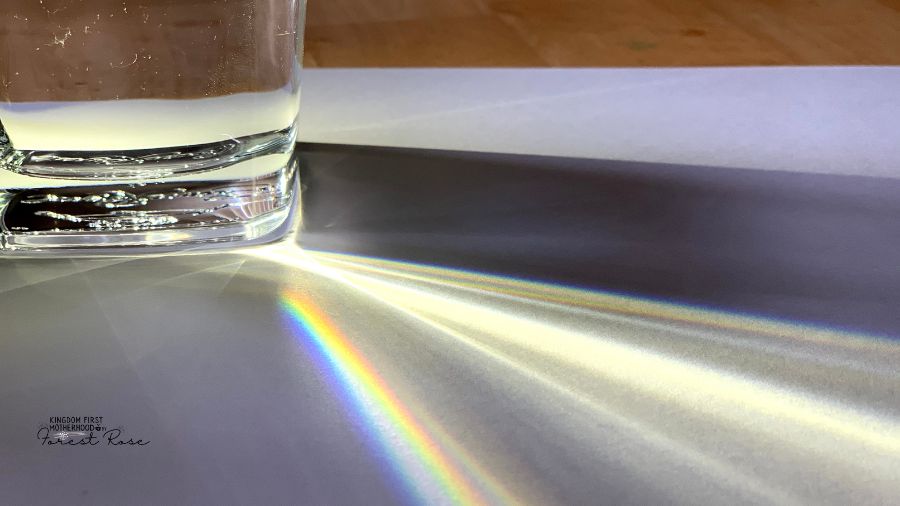
40. Water Filtration Experiment
Materials:
- Two clear glasses
- Coffee filter or paper towel
- Dirt or sand
- Water
Instructions:
- Fill one glass with dirty water (mix water with dirt or sand).
- Place a coffee filter or folded paper towel in the empty glass.
- Carefully pour the dirty water through the filter.
- Observe as the filter removes impurities, leaving cleaner water in the second glass.
41. Make Your Own Crystal Snowflakes
Materials:
- Borax
- Pipe cleaners (white or blue)
- Wide-mouthed glass or jar
- String
- Pencil or stick
Instructions:
- Shape a pipe cleaner into a snowflake.
- Attach a string to the snowflake and tie it to a pencil or stick.
- Fill the glass with a saturated Borax solution (mix Borax with hot water).
- Suspend the snowflake in the solution, ensuring it doesn’t touch the sides or bottom.
- Wait overnight and observe as Borax crystals form on the snowflake.
42. Rainbow Fireworks in a Jar
Materials:
- Jar or clear glass
- Water
- Vegetable oil
- Food coloring
Instructions:
- Fill the jar with water about one-third full.
- Pour a layer of vegetable oil on top of the water.
- Add a few drops of different food coloring.
- Watch as the food coloring droplets fall through the oil, creating a mesmerizing “firework” effect.
43. Solar-Powered S’mores Oven
Materials:
- Shoebox
- Aluminum foil
- Plastic wrap
- Graham crackers, chocolate, marshmallows
Instructions:
- Line the inside of the shoebox with aluminum foil.
- Cut a flap in the lid and cover it with plastic wrap to create a window.
- Assemble s’mores on a tray.
- Place the tray inside the shoebox, close the lid, and set it in the sun.
- Wait for the sun to melt the marshmallows and chocolate, and enjoy your solar oven s’mores!
44. Magic Jumping Beans
Materials:
- Uncooked beans (pinto beans or lima beans)
- Plate
Instructions:
- Place uncooked beans on a plate.
- Microwave the beans for about 30 seconds.
- Observe as the beans “jump” and move due to the pressure build-up inside.
45. Fizzing Science Lab
Materials:
- Vinegar
- Baking soda
- Dish soap
- Food coloring
- Plastic containers
Instructions:
- Mix vinegar with a few drops of food coloring and a dash of dish soap in a container.
- In a separate container, add baking soda.
- Pour the vinegar mixture over the baking soda and watch as the fizzing reaction occurs.
46. Static Electricity Butterfly
Materials:
- Balloon
- Small pieces of tissue paper
- String
- Scissors
Instructions:
- Cut small pieces of tissue paper into butterfly shapes.
- Blow up a balloon and tie it.
- Rub the balloon against your hair or a piece of fabric to create static electricity.
- Hold the balloon near the tissue paper butterflies and observe as they stick to the balloon, creating the appearance of a fluttering butterfly.
47. Skittles Experiment
Materials:
- Skittles candies (multiple colors)
- A white plate or shallow dish
- Warm water
Instructions:
- Arrange Skittles in a circle on the white plate.
- Add warm water to the center of the plate (not covering the Skittles).
- Watch as the colors dissolve and spread from the candies to create a colorful pattern on the plate.
- Enjoy the colorful display!
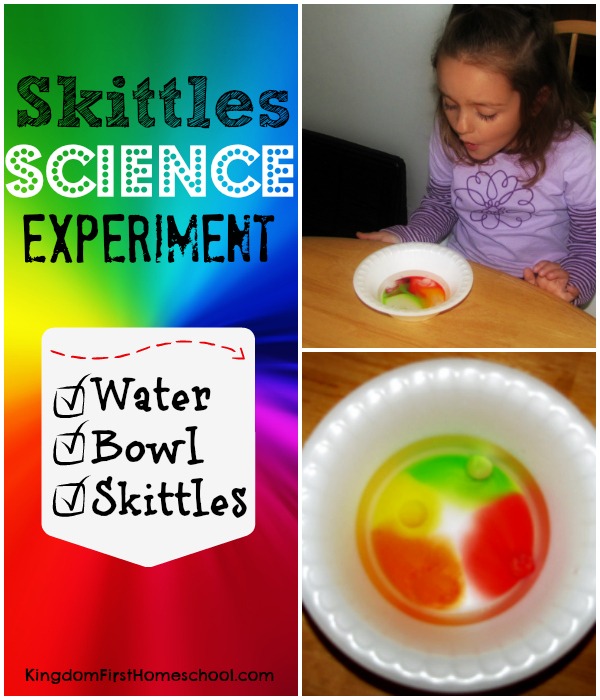
And there you have it, 47 fun and engaging homeschool science experiments that your kids will love! These hands-on science experiments cover a wide range of scientific principles and are designed to make learning at home exciting and memorable. Whether you’re exploring the mysteries of chemical reactions, the wonders of nature, or the magic of physics, these experiments offer a fantastic way to inspire curiosity and a love for science in your young learners.
Remember, the key to successful homeschooling is to keep the learning experience enjoyable, interactive, and memorable. These science experiments not only help your children grasp scientific concepts but also provide valuable life skills like problem-solving, critical thinking, and creativity. So, roll up your sleeves, gather your materials, and embark on this exciting scientific journey with your little scientists. Happy homeschooling, and have a blast experimenting together!
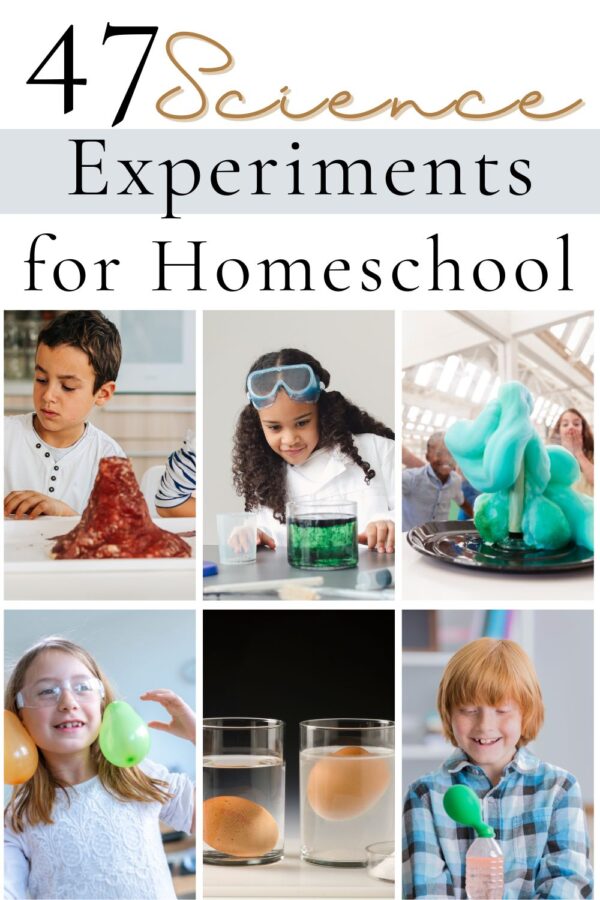
For more homeschooling inspiration, tips and encouragement, make sure to follow KFH on Facebook, Pinterest, Instagram and Twitter, and subscribe to our Newsletter for some FREE GOODIES!
Forest Rose is a God Loving, Blessed Wife, & Mama to 3 girls. She’s passionate about lifting moms out of the trenches that are discouraged, overwhelmed, or feeling alone or isolated. Her hope is to point them to Christ and equip them to rise up with a newfound hope and joy within, that He alone can provide. Besides blogging, she also loves to create printables!



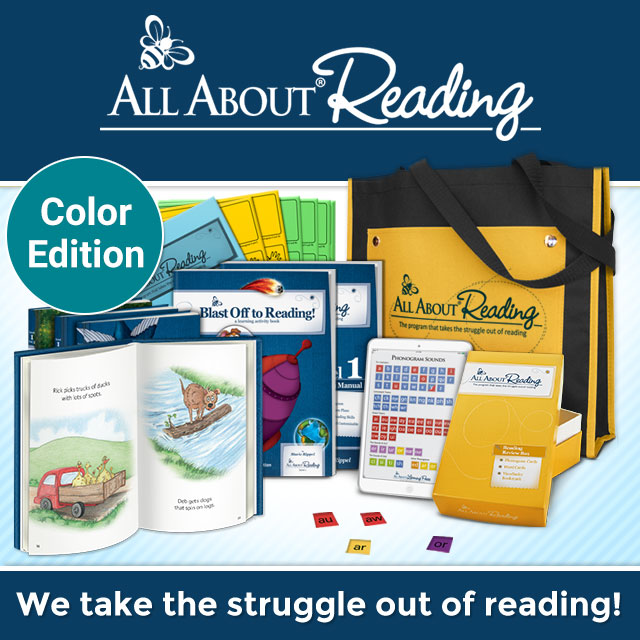
Leave a Reply